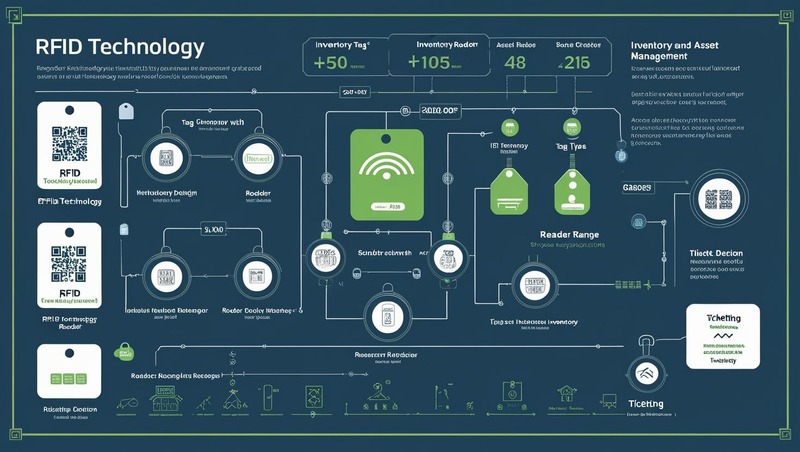The Radio Frequency Identification (RFID) market is poised for a significant transformation in 2025, evolving from a simple tracking technology into an intelligent data-driven tool. This shift is primarily propelled by the deep integration of Artificial Intelligence (AI) and Machine Learning (ML). As RFID systems capture immense volumes of data from supply chains, retail floors, and manufacturing lines, AI is becoming indispensable for interpreting this information. Companies are leveraging AI-powered analytics to move beyond mere identification, enabling predictive maintenance, highly accurate demand forecasting, and the automation of complex logistical decisions. This synergy turns real-time tracking data into actionable business intelligence, allowing for optimized inventories and more responsive operations.
Download PDF Brochure @ https://www.marketsandmarkets.com/pdfdownloadNew.asp?id=446

Fueling this intelligent evolution is the increasing reliance on cloud connectivity and the expansion of the Internet of Things (IoT) ecosystem. Cloud platforms provide the scalable and accessible infrastructure needed to manage the massive datasets generated by widespread RFID implementation. By hosting RFID data on the cloud, enterprises can achieve global visibility and control over their assets in real time. This connection is fundamental to the IoT, where RFID tags act as a crucial link between physical objects and the digital world. In 2025, this integration will lead to smarter, more interconnected systems, from automated warehouses that self-manage stock levels to fully transparent supply chains that enhance efficiency and reliability.
With the growing integration of RFID technology into essential business processes, the focus on data security and sustainability has intensified. The industry is responding with the development of more robust encryption standards and secure authentication protocols to safeguard sensitive information from potential breaches. In parallel, there is a significant push towards environmental responsibility. This includes the rising demand for eco-friendly RFID tags, such as those made from paper or other recyclable materials, which helps companies meet sustainability goals. This trend addresses both corporate ethics and consumer expectations for greener business practices.
Finally, these advanced capabilities are driving the expansion of RFID applications into a wider array of sectors. While retail and logistics remain dominant, healthcare is increasingly adopting RFID for real-time patient monitoring and medical equipment management. Likewise, the manufacturing industry is using the technology to enhance production line efficiency and enable smart factory initiatives. The convergence of AI-driven insights, seamless cloud integration, and a commitment to security and sustainability is solidifying RFID’s role not just as a tracking tool, but as a core component of the digital transformation sweeping across the global economy.
Frequently Asked Questions (FAQs) on the RFID Market
- What is RFID technology and how does it work?
RFID (Radio Frequency Identification) is a wireless communication technology that uses radio waves to identify and track objects. It consists of three components: RFID tags, readers, and antennas. The RFID reader sends out a signal that activates the tag, which then transmits its stored data back to the reader. This enables automated tracking without the need for direct line-of-sight. - How is AI transforming the RFID market?
AI is enhancing RFID systems by enabling intelligent data analysis, predictive maintenance, real-time decision-making, and automation. Machine learning algorithms can analyze large volumes of RFID data to detect anomalies, forecast demand, and optimize workflows across logistics, retail, and manufacturing sectors. - What are the key benefits of integrating AI with RFID systems?
Integrating AI with RFID systems offers benefits such as improved data accuracy, automated inventory control, enhanced asset tracking, predictive analytics, reduced human error, and faster decision-making. This leads to increased operational efficiency and cost savings across industries. - Which industries are adopting AI-powered RFID solutions the fastest?
Retail, logistics, healthcare, manufacturing, and agriculture are the fastest adopters of AI-powered RFID solutions. These industries benefit from improved inventory management, supply chain transparency, asset tracking, and real-time insights. - What is the difference between passive and active RFID tags?
Passive RFID tags have no internal power source and are activated by the reader’s electromagnetic field. They are inexpensive and ideal for short-range tracking. Active RFID tags have a built-in battery, allowing them to transmit signals over longer distances and store more data, making them suitable for high-value asset tracking.
